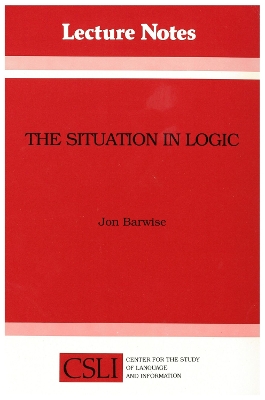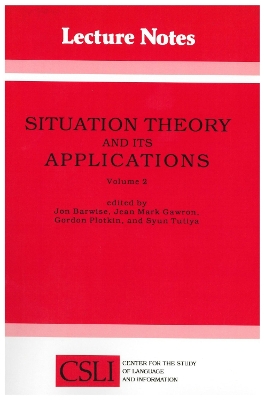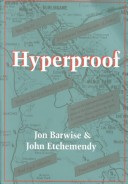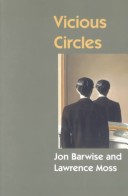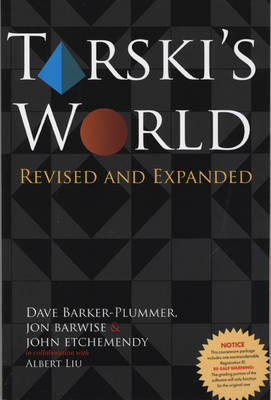Center for the Study of Language and Information Publication Lecture Notes
4 primary works • 5 total works
Book 17
Situation Theory and situation semantics are recent approaches to language and information, approaches first formulated by Jon Barwise and John Perry in Situations and Attitudes (1983). The present volume collects some of Barwise's papers written since then, those directly concerned with relations among logic, situation theory, and situation semantics. Several papers appear here for the first time.
Book 26
Situation Theory and its Applications: Volume 2
by Jon Barwise, Jean Mark Goodwin, Gordon Plotkin, and Syun Tutiya
Published 30 November 1991
Situation theory is the result of an interdisciplinary effort to create a full-fledged theory of information. Created by scholars and scientists from cognitive science, computer science, AI, linguistics, logic, philosophy, and mathematics, the theory is forging a common set of tools for the analysis of phenomena from all these fields. This volume presents work that evolved out of the Second Conference on Situation Theory and its Applications. Twenty-six essays exhibit the wide range of the theory, covering such topics as natural language semantics, philosophical issues about information, mathematical applications, and the visual representation of information in computer systems.Jon Barwise is a professor of philosophy, mathematics, and logic at Indiana University in Bloomington. Jean Mark Gawron is a researcher at SRI International and a consultant at Hewlett-Packard Laboratories. Gordon Plotkin is a professor of theoretical computer science at the University of Edinburgh. Syun Tutiya is in the philosophy department at Chiba University in Japan.
Book 42
Hyperproof is a system for learning the principles of analytical reasoning and proof construction, consisting of a text and a Macintosh software program. Unlike traditional treatments of first-order logic, Hyperproof combines graphical and sentential information, presenting a set of logical rules for integrating these different forms of information. This strategy allows students to focus on the information content of proofs, rather than the syntactic structure of sentences. Using Hyperproof the student learns to construct proofs of both consequence and nonconsequence using an intuitive proof system that extends the standard set of sentential rules to incorporate information represented graphically. Hyperproof is compatible with various natural-deduction-style proof systems, including the system used in the authors' Language of First-Order Logic.
Book 60
Circular analyses of philosophical, linguistic, or computational phenomena have been attacked on the assumption that they conflict with mathematical rigour. Barwise and Moss have undertaken to prove this assumption false. This volume is concerned with extending the modelling capabilities of set theory to provide a uniform treatment of circular phenomena. As a means of guiding the reader through the concrete examples of the theory, the authors have included many exercises and solutions: these exercises range in difficulty and ultimately stimulate the reader to come up with new results. Vicious Circles is intended for use by researchers who want to use hypersets; although some experience in mathematics is necessary, the book is accessible to people with widely differing backgrounds and interests.
"Tarski's World" is an innovative and exciting method of introducing students to the language of first-order logic. Using the courseware package, students quickly master the meanings of connectives and qualifiers and soon become fluent in the symbolic language at the core of modern logic. The accompanying CD-ROM, compatible with both Macintosh and PC formats, includes a unique and effective corrective tool in the form of a game that methodically leads students back through any errors in sentences they have constructed, as well as a program for submitting homework to an automated grader. Intended as a supplement to a standard logic text, "Tarski's World" is an essential resource for helping students learn the language of logic.
